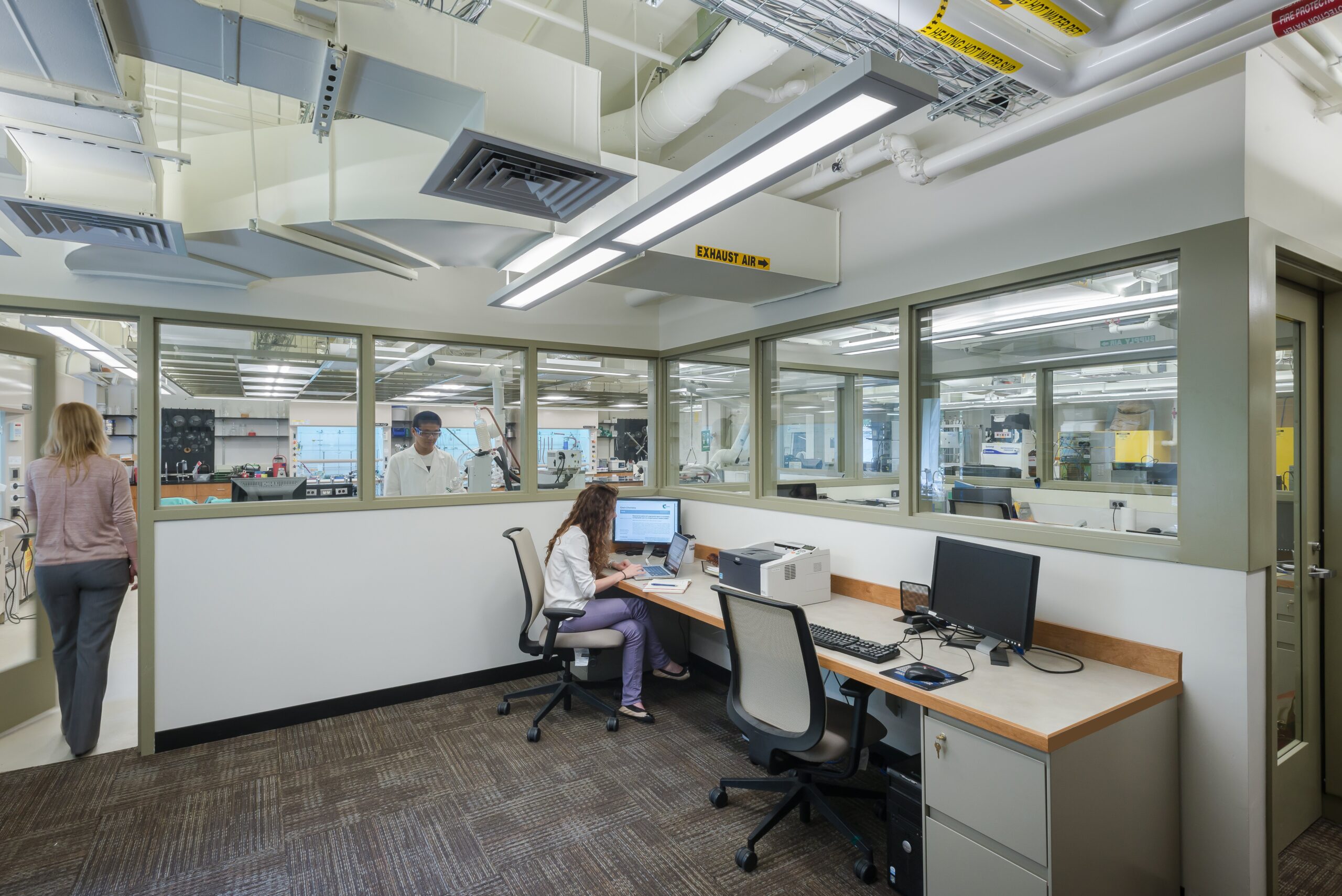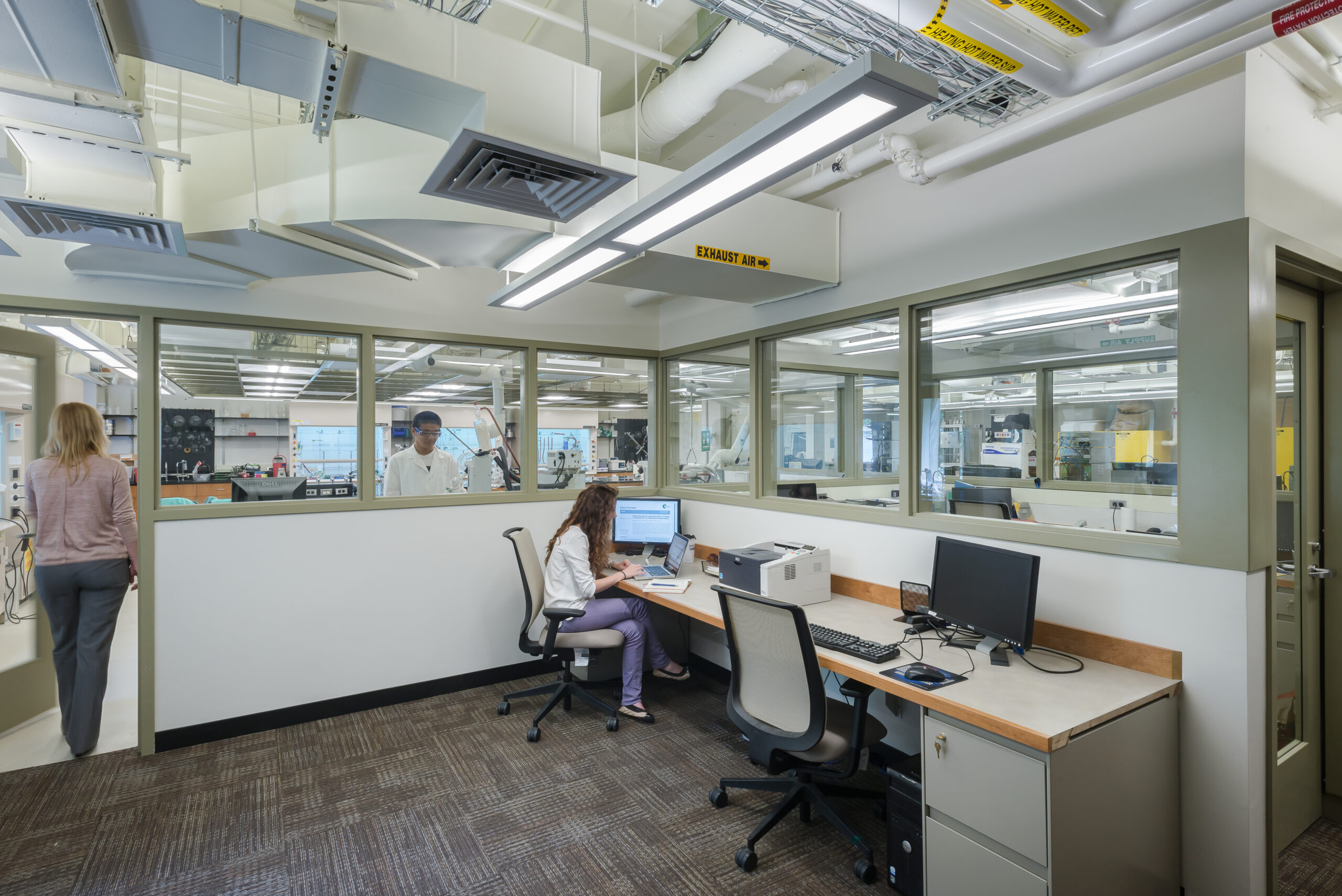GREEN CHEMISTRY LABORATORY
Sparking sustainable discoveries
Yale’s Center for Green Chemistry and Engineering, an interdisciplinary group of chemists and engineers, recently consolidated their research efforts into a shared and dedicated space: The Green Chemistry Lab. This lab will serve as ground zero for fulfilling the Center’s mission to develop chemical products and processes that have low or no environmental impacts. Intent on creating the scientific and technological breakthroughs that will be crucial to a sustainable future, this new space will play a key role in helping to stimulate and accelerate these advances; as well as disseminate information.
According to the Center’s Program Manager Karolina Mellor, “Our goal is not only to advance science and research, but also communicate it to a variety of audiences (NGOs, industry, academia, and government, as well as local communities and the general public) so that the message is widely disseminated.” To accommodate these goals, an important element of the design included an office space in close proximity to the research areas that are occupied by fixed/moveable workbenches and fume hoods. In reference to these elements, Mellor added, “[This] new space allows for very close interactions, collaborations and sharing of these ideas.”
In keeping with the Center’s mission, CWA designed an energy efficient space utilizing sustainable building products. Matching the original paneling and casework of the Paul Rudolph designed mid-century building, CWA specified cherry casework that contains no added urea formaldehyde, a process certified by the Forest Stewardship Council. Additionally, energy efficient LED lighting was incorporated throughout the building.
“I was surprised by how responsive the CWA team was to suggestions from the scientific team. While there were obviously constraints around budget and the limitations of the building infrastructure, I always felt free to provide input on design elements. The CWA team was very patient throughout the iterative process. Perhaps the best compliment I can give is that the finished space exceeded my expectations. In my opinion, the new lab promotes the kind of collaborative environment we need in order to achieve this work… the open design with clear sight lines make it easy to see what colleagues are working on, and that in turn sparks scientific discussion.” – Evan Beach, Program Director and Associate Research Scientist
Backstory
Paul Anastas, the Center’s Director, is considered the “Father of Green Chemistry” for his ground-breaking work in the field, and recently returned to Yale after having served as the head of research for the U.S. Environmental Protection Agency (EPA).
Context
Located on the edge of Yale’s Science Hill in the Paul Rudolph designed Greeley Memorial Laboratory, the new 2,015 sq ft space involved a comprehensive renovation of 30% of the building’s basement level.
Nuts & Bolts
The former basement space was dark and cramped – To counter this, we left the mechanical systems exposed above the ceiling grid providing for an open and light-filled environment.
What You Don’t See
Optimized energy management systems: The mechanical systems utilize low flow, variable air volume fume hoods with modern controls coupled with new laboratory exhaust and heat recovery resulting in significant reductions of energy consumption.
Best Use
Sparking scientific discussions that will inevitably generate a cleaner and greener future.
Client
Yale University
Type
Renovation
Size
2,015 sq ft
Completion
2015
Team
HF Lenz, M/E/P
Giordano Construction Company, Construction Manager




